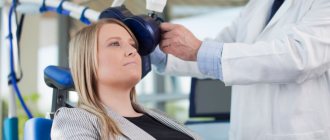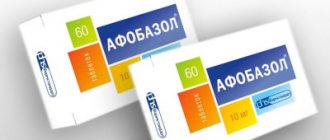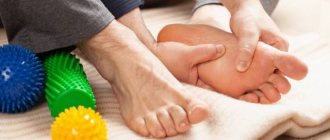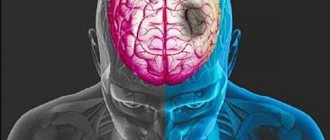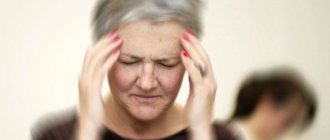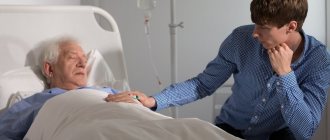Stroke: stages and tactics of intensive care (lecture)
Professor, academician of the Russian Academy of Natural Sciences and MANEB Nazarov I.P.
| Part 1 - Diagnostics | Part 3 – Neuroprotection |
| Part 2 – Stroke Treatment | Part 4 – Hemorrhagic stroke |
Part 2. Treatment of stroke
|
BASIC THERAPY
is aimed at relieving disturbances in vital functions (breathing, hemodynamics, swallowing), as well as status epilepticus. It is carried out immediately, before the type of stroke is determined, or when the nature of the stroke is not specified.
Basic therapy includes the following components:
- Measures aimed at emergency correction of violations of vital functions - normalization of breathing disorders, hemodynamics, swallowing - ABC program (Air - air, Blood - blood, Cor - heart).
- Relief of status epilepticus or series of seizures
- Techniques aimed at combating cerebral edema and preventing increased ICP, regulation of EBV and acid-base balance.
- Correction of autonomic hyperreactions, psychomotor agitation, vomiting, persistent hiccups.
- Measures to care for the patient, normalization of nutrition and prevention of complications.
- Metabolic protection of the brain - correction of brain dysfunction caused by stroke and disorganization of cellular metabolism - neuroprotective therapy, it is most effective in ischemic stroke.
BASIC THERAPY
I. Relief of violations of vital functions:
a) normalization of
respiratory
(restoration of airway patency, sanitation of the oral cavity, introduction of an elastic air duct, tracheal intubation, transfer to mechanical ventilation). Monitoring of respiratory functions and blood oxygen is carried out using a pulse oximeter. Patients with hypoxemia (oxygen saturation <92%) require oxygen inhalation of 2-4 L per minute. As a rule, these are patients with brainstem stroke, with extensive lesions in the middle cerebral artery basin (malignant stroke). Patients with severe lung diseases, with an impaired level of consciousness less than 9 points on the Glasgow Coma Scale, with lost brainstem reflexes and with acute aspiration, tracheal intubation is indicated. These are necessary measures to prevent early complications of stroke, reduce cerebral hypoxia, and prevent cerebral edema.
b) maintaining an optimal level of hemodynamics:
- the choice of antihypertensive drugs
in case of a sharp increase in blood pressure after the development of a stroke should be carried out taking into account 3 factors:
1. Maintaining an optimal level of heart function (SV, IOC). 2. Maintaining bcc. 3. Maintaining the linear velocity of blood flow (LBV) in the vessels of the brain at the proper level.
Regulation of the functions of the cardiovascular system primarily includes blood pressure control. Arterial hypertension occurs in 75% of patients in the acute period of cerebral stroke. In most patients, elevated blood pressure decreases within the first week, but in 30% it remains elevated. It is not recommended to reduce blood pressure in patients with ischemic stroke if systolic < 220 mm Hg and diastolic < 120 mm Hg. The exception is patients with heart failure, acute myocardial infarction, and acute renal failure. In such patients, immediate administration of antihypertensive drugs is indicated. The optimal blood pressure level in patients with a history of arterial hypertension is 180/190-105 mm Hg, without arterial hypertension - 160/90 mm Hg. To lower blood pressure, drugs with a short-term antihypertensive effect and minimal impact on cerebral hemodynamics should be used.
For this purpose,
the following drugs are used
:
- Nifedipine
(synonyms: Corinfar, Adalat, Cordafen, Procardia) is a calcium channel blocker. Prescribed sublingually (5-10 mg; onset of action in 1-5 minutes, duration of action - 2-4 hours) or orally (10-20 mg, onset of action in 30 minutes, duration of 4-7 hours). Blood pressure control - possibly a sharp reduction, especially with sublingual use. - Captopril
(synonyms: capoten, alopresin, lopril, tensiomin) is an ACE inhibitor. Captopril 6.25-12.5 mg per os, sublingually 50 mg (effective after 10 minutes 4 hours). Can be administered intravenously as a bolus: at the rate of 0.5-1.0 mg/kg body weight (onset of action in 3-5 minutes, lasting up to 4 hours). The possibility of a “first dose effect” – a sharp decrease in blood pressure – should be taken into account! - Clonidine
0.15-0.3 mg intramuscularly or intravenously or 0.15-0.075 mg per os.
The drug is a powerful cerebroprotector
and should be used during the acute period, taking into account contraindications - heart rate less than 50 beats/min and low blood pressure. - Pentamine
IV slowly (in 5-7 minutes) no more than 0.5 ml of 5% solution per 10 ml of isotonic sodium chloride solution, under blood pressure control to avoid a rapid decrease in blood pressure. The drug helps prevent and correct cerebral edema. - Labetolol
5-20 mg intravenously, in the absence of bradycardia. - In patients with diastolic pressure > 140 mm Hg. nitroglycerin or
sodium nitroprusside 0.5-1.0 mg/kg/min is indicated In this case, the decrease in blood pressure should not be sharp.
Severe arterial hypotension
Arterial hypotension occurs much less frequently in patients with ischemic stroke. Its causes may be a decrease in circulating blood volume, a decrease in cardiac output due to myocardial infarction, cardiac decompensation or arrhythmias. Therefore, patients with hypotension are advised to restore circulating blood volume by performing infusion therapy (gelatins, hydroxyethyl starches, NaCl 0.9%, polyionic solutions not containing glucose). To increase blood pressure, dopamine and glucocorticoid hormones are prescribed.
- Dopamine
- administered 50 - 100 mg in 250 ml of isotonic sodium chlorine solution (it is preferable to use an infusion pump) 3-6 drops per minute under the control of blood pressure and pulse until blood pressure increases 100-110 mm Hg. Art., the effect of dopamine is short-term. - Glucocorticoid hormones
. Prednisolone is administered as a single intravenous bolus at a dose of 120 mg or dexamethasone 16 mg as a single intravenous bolus. Then the administration mode is determined by blood pressure within the range of 100-110 mm Hg. - In case of severe tachycardia and manifestations of circulatory failure, atrial fibrillation, cardiac glycosides ( strophanthin
0.5-1.0 or 0.025% solution or
corglicon
1.0 ml 0.06% solution) can be prescribed. The drugs are diluted to 20 ml saline. solution and administered IV slowly over 5-6 minutes under the control of blood pressure and pulse.
Relief of status epilepticus or series of seizures
- Seduxen (Relanium)
2-4 ml 0.5% in 20 ml of isotonic NaCl solution slowly intravenously, then, if there is no effect, inject 2-4 ml. - Sodium hydroxybutyrate
at the rate of 70 mg/kg, every 10 ml of the drug is diluted with 10 ml of isotonic sodium chlorine solution. - If there is no effect, non-inhalation anesthesia is used - sodium thiopental or hexenal (it should be remembered that they depress respiration and hemodynamics).
- Sodium thiopental or hexenal
1g is diluted in 10 ml of isotonic sodium chlorine solution (0.9% solution), administered slowly at the rate of 1 ml per 10 kg of patient body weight. - If the status does not stop, perform mechanical ventilation and slowly inject 70-80 ml of 10% sodium thiopental solution.
- If the above measures are ineffective, inhalation anesthesia is performed in the intensive care unit with a mixture of nitrous oxide and oxygen in a ratio of 2:1 or 3:1.
- For a long duration of status epilepticus, in order to prevent cerebral edema, intravenous injection of glucocorticoids is recommended - prednisolone 200-400 mg, dexamethasone 15-20 mg.
Normalization of water and electrolyte balance
A very important area of general therapy for acute stroke is the normalization of water and electrolyte balance. It is necessary to avoid a decrease in circulating blood volume, an increase in hematocrit, and a decrease in the rheological properties of blood. The risk group in this regard consists of elderly patients who have a tendency to dehydration and, at the same time, excessive infusion increases the risk of developing pulmonary edema.
Control of glucose metabolism
It is necessary to regularly monitor your blood glucose levels. It is known that both hyper- and, especially, hypoglycemia have a negative effect on the outcome of ischemic stroke. It is recommended to use insulin in patients with glycemic levels > 10 mmol/l. Monitoring and correction of glycemia is carried out according to the glycemic profile.
Body temperature control
Hyperthermia occurs in 25-60% of patients in the first 48 hours. Hyperthermia negatively affects the outcome of ischemic stroke and increases the size of the infarction. Therefore, when body temperature rises above 37.5°C. the use of antipyretic drugs (500 mg paracetamol) is indicated. However, it must be remembered that in 80% of cases the cause of fever is a bacterial infection. In this regard, it is necessary to search for the source of infection, and if it is identified, use antibiotics as early as possible. The optimal method for assessing the development of infection is the use of a procalcitonin test.
Dysphagia control
All stroke patients should have their swallowing function tested. If there are swallowing disorders (dysphagia), a nasogastric tube is placed to prevent aspiration pneumonia and ensure adequate nutrition for the patient.
Development mechanism
Stroke is a pathological condition that is accompanied by a sudden and severe disruption of blood circulation in any part of the brain. Since neurocytes (cells of the nervous system) are very sensitive to oxygen and energy starvation, when there is a power failure, they die. According to the development mechanism, there are 3 types of stroke:
- Ischemic stroke - blood flow sharply decreases due to a decrease in the diameter of one of the arteries of the brain. Over a short period of time, oxygen starvation develops, followed by cell death. In the absence of help, irreversible changes occur. The pathological process occurs against the background of increased pressure, which provokes spasm of the arterial vessels of the brain or damage to the covering of the atherosclerotic plaque (occurs in atherosclerosis) with subsequent formation of a blood clot. If the reading is above 160/100 mm Hg. Art., the risk of violations increases significantly.
- Hemorrhagic stroke - hemorrhage occurs directly into the brain tissue, which leads to the subsequent death of neurocytes. The pathological condition develops over a short period of time, so it is rarely possible to avoid irreversible changes. Hemorrhagic stroke with low pressure develops against the background of a change in condition and a decrease in the strength of the vascular walls.
- Subarachnoid hemorrhage - blood enters the space between the arachnoid and pia mater of the brain. This leads to a volumetric process, as a result of which the tissues experience mechanical compression, leading to local disruption of blood circulation and nutrition with subsequent death of neurocytes. The pathological process develops over a relatively long period of time, which should usually be enough to provide qualified assistance and prevent irreversible changes.
The division into species depending on the mechanism of development has an important justification. Depending on the pressure at which a stroke occurs, treatment approaches are fundamentally different. Regardless of the origin of the pathological condition, the risk of developing a vascular accident in the brain increases significantly against the background of arterial hypertension (high blood pressure).
What to do if you have a stroke? The neurologist has compiled simple instructions that can save you
Over the course of a year, more than 30,000 people have a stroke in Belarus. Only 10% of them return to normal life. Neurologist Sergei Marchenko tells how to identify a stroke and what needs to be done before it is too late.
What is a stroke anyway?
– This is an acute circulatory disorder in the brain, which is always a secondary disease. It does not occur in healthy people.
According to the mechanism of circulatory disorders, strokes are divided into ischemic (about 85% of all strokes) and hemorrhagic. In the first case, the vessel is blocked by a thrombus (embolus), in the second, the vessel ruptures. There is also a division of strokes according to severity, but even a mild stroke is a deadly disease.
Do these types have the same symptoms?
Stroke symptoms depend on the location in the brain, not the type of stroke. If blood circulation in the speech center is impaired, speech will suffer, and in the motor center, movements in the arm and (or) leg will be impaired.
How can you tell if a person is having a stroke?
A very simple test has been invented to detect stroke, which is recommended by all national and international protocols. It’s called “Face, Hand, Speech, Time,” and based on it, emergency personnel have the right to make a diagnosis of stroke.
Face: Ask the patient to smile or show teeth. With a stroke, noticeable asymmetry of the face occurs (the corner of the mouth “hangs” on one side).
Arm: The patient is asked to raise and hold both arms 90° in a sitting position and 45° in a supine position for 5 seconds. During a stroke, one of the arms drops.
Speech: Ask the patient to say a simple phrase. During a stroke, the patient is unable to clearly and correctly pronounce a simple phrase; his speech is unintelligible and slurred.
If there is at least one symptom indicating the development of a stroke, it is necessary to urgently call an ambulance - the sooner help is provided, the greater the chance of recovery.
Timing: It is very important to find out when the stroke occurred. You need to ask the person when he or others first noticed these violations. If a person cannot remember when they first noticed symptoms, we ask their loved ones when they last saw them without them.
There is the concept of a “therapeutic window” - the time when you can try to completely restore blood circulation. It refers to ischemic types of strokes, because when a vessel ruptures, you do not need to restore blood flow, but stop the bleeding and remove the hematoma.
The duration of the “therapeutic window” is no more than 6 hours. During the first four and a half hours, blockage of the vessel can be cured both with medications (i.e. using thrombolysis) and endovascular methods (using thrombus extraction) - that is, with the help of special devices that are inserted into the arteries of the brain and remove the blood clot mechanically. In the interval of 4.5–6 hours, only endovascular treatment is possible.
The success of stroke treatment depends entirely on the timing of seeking medical help. Unfortunately, if the symptoms are not very pronounced, people often wait for everything to go away on its own, but it doesn’t, and sometimes it only gets worse.
Can I use this test to determine if I have a stroke?
Certainly. If you realize that something is wrong with you, you can always smile at yourself in the mirror and see how symmetrical the smile is, evaluate your speech, try to hold both hands. But still, most often, strokes are diagnosed for someone. Relatives see that something is wrong with the person.
When a stroke occurs, what happens to the person at that moment? Does he faint and his condition deteriorate sharply?
All options are possible. When a large vessel is blocked, a person may lose consciousness because a large area of the brain is no longer supplied with oxygen. If the vessel is small, the symptoms may be subtle, but gradually become more pronounced.
Should all these symptoms occur during a stroke?
No. Symptoms can be all together, or just one of them: it all depends on how large the vessel is and what part of the brain is affected. In addition, it is important to remember the following nuances: the test only talks about the arm, but weakness may also be in the leg, and a person may develop coordination disorders.
The main thing: if your condition suddenly changes, do not wait, but immediately seek help! This applies not only to stroke; in medicine, a lot depends on time: it is difficult to successfully treat a surgical pathology when abdominal pain lasts a week, and for cardiologists to treat a myocardial infarction when the pain syndrome lasts more than 24 hours.
What can a stroke be confused with?
With diseases that cause the same symptoms. This could be a tumor, an injury, or an infectious lesion of the brain (encephalitis, meningitis). All these diseases are dangerous, and in any case they need to be treated, and not wait until they go away on their own.
These symptoms most likely will not go away on their own. And even if they disappear, you must go to the doctor. There is a concept of “transient cerebrovascular accident” - when neurological symptoms arise, but quickly pass because blood circulation is restored on its own within 24 hours. This is also a very dangerous condition, a harbinger of a full-blown stroke.
Is it possible to miss a stroke?
Can. The brain is responsible for everything in our body, but at the same time it has functionally insignificant zones: if a stroke occurs in one of them, the symptoms will be insignificant or completely unnoticeable. Such a stroke is often detected already in the form of old changes on brain tomograms.
How can I help someone who is having a stroke?
Call an ambulance by dialing 103. Afterwards, lay him down with his body elevated 30–45 degrees, ensure airway patency by freeing his neck from clothing and clearing the oral cavity of vomit and foreign objects, including removable dentures, in case of unconsciousness In case of patient's condition, he must be turned on his side to prevent saliva and vomit from entering the respiratory tract.
No other help should be provided: do not lower the pressure, do not give medications. Treatment for stroke depends on its type, and only a doctor can diagnose it.
What should I do if I have a stroke with speech impairment, and there is no one around?
If they are minor, try to make sure that the emergency medical dispatcher understands what you want. If that doesn’t work, try writing to someone you know and ask them to call you an ambulance.
What to do if a person has a stroke far from the city?
You still need to call an ambulance. Our entire country is divided into service zones; every location is assigned an ambulance substation, from where a team must arrive and provide assistance.
If it is completely out of the way and you understand that it will take a very long time to get there, it makes sense to load a person into a car and drive to the nearest town or hospital.
Currently in Belarus, active work is underway to organize regional vascular centers, which are designed to provide assistance to patients located in an approximately 70-kilometer zone, where both strokes and heart attacks will have to be treated using modern methods.
How does a stroke usually end?
Death, disability or recovery. Statistics on stroke outcomes have not changed for decades: 20–30% of patients die within a year, about 60% remain disabled in various groups, and only about 10% return to normal life.
If our fellow citizens began to seek help in a timely manner, fewer people would remain disabled.
About 60% of patients with strokes treated with thrombolysis or thromboextraction are discharged from the hospital with either no or minimal impairment - this does not take into account the rehabilitation period. This is why I am so happy about timely access to doctors: we have everything for treatment - knowledge, skills and technology.
What exactly are the consequences of a stroke?
Most often, the consequences are symptoms that could not be eliminated during treatment and rehabilitation. They depend on the size of the stroke and its location. In most cases, it is difficult to immediately predict the outcome of a stroke.
Are there any mental consequences?
Of course, they can be, and moreover, they often occur. A stroke is brain damage, you don’t even need to build logical chains here. For example, people with speech disorders sometimes become tense and overly active due to the fact that they are not understood and cannot express their thoughts. Unfortunately, sometimes people become inadequate.
What does recovery depend on?
Firstly, from the time of the patient’s presentation, from whether we were able to restore blood flow to the death of a large part of the brain. When a vessel is blocked by a thrombus (embolus), the area of the brain that is supplied only by this vessel dies in any case (without oxygen, the brain lives only 5-6 minutes) - this is the “stroke core”. The areas of the brain surrounding the “core”, which have adjacent blood supply not only from the damaged vessel, will experience oxygen starvation. And if we restore blood flow in time, they will return to their normal state and these areas of the brain will remain healthy.
Secondly, it depends on the diameter of the blocked vessel: the larger it is, the larger the stroke, the more severe the symptoms and treatment.
Only 30% of patients come to the “therapeutic window”, and half are patients with cerebral hemorrhage, who are treated completely differently, to whom thrombolysis is not applicable. Of these 30% in 2017, thrombolysis and (or) thromboextraction were used in only 4.2% of cases, that is, in every eighth. The rest are treated as usual, these modern methods are not applied to them: they arrive on time, but we find contraindications. In such cases, unfortunately, blood flow cannot be restored: people either die or remain disabled.
What should I do to fully recover?
Arrive at the hospital on time, undergo successful treatment and actively rehabilitate. Rehabilitation includes taking medications, physical therapy on the recommendation of a specialist, visiting a speech therapist, etc. By the way, the effectiveness of recovery is greatly enhanced by the support and help of loved ones. The attending physician will tell you and show you exactly how you can help; the main thing is to work with the sick person.
After a stroke, is it necessary to go to a psychotherapist?
Anything that needs treatment, any deviation in health, needs to be treated. If a person has developed disturbances after a stroke that have not gone away, there is no need to get used to them - this also applies to the psyche.
Is there a chance that the stroke will happen again?
Unfortunately, for those who have had a stroke, the risk of having another one increases many times over, especially in the first year. Further the risk decreases, but still remains high. According to various publications, recurrent stroke occurs in 30–50% of patients.
After treatment, it is imperative to follow secondary stroke prevention measures - this is taking medications, for many on a lifelong basis, qualitative lifestyle changes, and controlling the disease that led to the stroke.
What should I do to avoid having a stroke the first time?
To be healthy. But, unfortunately, over the years this does not work out, so primary prevention is the timely detection of chronic and other diseases that can lead to stroke. For this purpose, our country has a well-thought-out medical examination system: for each age, an examination plan has been developed that allows us to exclude diseases characteristic of it. It is free and accessible, the main thing is to get to the clinic, complete the prescribed examinations, and complete everything with examinations by the necessary specialists. There are many other dangerous diseases besides stroke, and they all need to be treated.
If there are no health problems, you need to eliminate smoking, alcohol abuse, start moving more and eat right.
What diseases cause stroke?
Diseases that occur in the vast majority of patients with stroke are arterial hypertension, cerebral atherosclerosis, heart rhythm disturbances, and diabetes mellitus. Smoking, drinking alcohol, being overweight, and having a sedentary lifestyle will all contribute to a stroke.
What most often triggers a stroke?
It is not always possible to say what caused a stroke. The body can adapt to changes for a long time, as long as they do not exceed the limit of its capabilities. An atherosclerotic plaque can grow for a long time, but sooner or later it blocks the vessel or, if it is unstable, breaks away from the wall and blocks it.
Most often, the “trigger” is a jump in blood pressure.
Does stroke depend on heredity?
If your grandmother had a stroke, it is not necessary that you will have one too. But there is a hereditary predisposition to chronic diseases that cause stroke. If your mom has hypertension, chances are you will have it too.
Does the disease depend on age?
Stroke occurs mainly in older people and those who have retired. But in recent years, there has been an increase in the proportion of patients of working age; modern diagnostic capabilities make it possible to more often detect this disease in young people.
When should you reduce?
Blood pressure is the force with which blood presses on the walls of the arteries, stretching them. This is a very important hemodynamic indicator, on which the speed and volume of blood flow in peripheral tissues depends. What pressure can be caused by a stroke is determined by several factors:
- heart rate and amplitude;
- total volume of the vascular bed;
- volume of circulating blood.
An increase in blood pressure can occur due to increased heart rate, spasm of arterial vessels (decreased vascular volume) or an increase in the volume of circulating blood (fluid retention in the body). The normal pressure level is different for each person, but it should not exceed 140/90 mmHg. Art. Arterial hypertension increases the risk of developing a cardiovascular accident, which includes cerebral stroke and myocardial infarction. If the reading is more than 180/100 mmHg. Art. the likelihood of ischemic or hemorrhagic stroke increases several times.
What blood pressure can trigger the development of a stroke?
At what blood pressure level can a stroke occur and can the condition develop at normal blood pressure? It is worth noting that most often a stroke occurs in hypertensive patients. The reasons are:
- Stably high blood pressure, which does not decrease even while taking medications;
- sharp jumps in indicators caused by a stressful situation or significant physical activity;
- refusal of treatment for hypertension and heart disease.
Doctors call the physiological level of blood pressure, at which all body systems operate in a natural mode, a level of 120/80 mm. rt. Art. When it increases to 180/120, we can talk about the development of a hypertensive crisis, which can quite easily turn into an apoplexy (stroke).
The danger in terms of the development of pathology is represented by too small a difference between the upper and lower blood pressure readings. If it is less than 40 units, then the likelihood of blockage of the vascular lumen increases significantly. Therefore, a blood pressure of 130/110 is more likely to trigger the development of a stroke than a blood pressure of 160/90.
No ads 1
Causes
Brain stroke is a polyetiological pathological condition. This means that its development is provoked by several reasons, which include:
- Atherosclerosis is the main cause of cardiovascular disease. The pathological condition is characterized by the deposition of cholesterol in the walls of arterial vessels with the formation of atherosclerotic plaques. They reduce the lumen of the artery, due to which blood flow in the tissues worsens. Against the background of increased pressure, damage to the covering of the atherosclerotic plaque often occurs, which provokes the intravascular formation of blood clots with subsequent blockage of blood vessels.
- Hypertension - a prolonged increase in the level of systemic blood pressure causes a number of changes in the vessels of the brain, leading to a deterioration in blood flow in the tissues. Also, the pathological condition provokes the rupture of atherosclerotic plaques with the formation of blood clots. High blood pressure during stroke in women is often recorded during the postmenopausal period, which is associated with hormonal changes in the body.
- An increased tendency of blood to clot is a factor leading to spontaneous intravascular formation of blood clots (thrombosis). Clots with blood flow move in the vascular bed and clog the arteries, followed by a sharp cessation of blood flow in them.
- Thrombophlebitis is an inflammatory process in the venous vessels with a predominant localization in the lower extremities, which is accompanied by the spontaneous formation of blood clots.
- Malformation of arterial vessels is a congenital pathology, which is characterized by the formation of a “tangle” of arteries of various sizes in one place. At the same time, most of the vessels have low wall strength, which leads to their damage and the development of hemorrhage. The likelihood of this outcome is higher with high blood pressure.
- Congenital disorders in the walls of arterial vessels, which are accompanied by a decrease in the strength of their walls, are one of the factors in the development of hemorrhagic stroke in adults, less often in children.
Knowledge of the reasons for the increase in systemic blood pressure and the development of cerebral stroke is necessary for choosing measures aimed at preventing the pathological condition.
Female sex hormones estrogens protect arterial vessels from the appearance of atherosclerotic plaques. All problems with the heart, blood vessels, and an increased likelihood of developing a cerebral stroke in women occur during the decline of reproductive function with a decrease in the level of estrogen in the blood.
Blood pressure after stroke
Pressure after a cerebral stroke has a great influence on subsequent tissue regeneration, the effectiveness of treatment, and the duration of the early and late recovery period. In the first minutes of providing qualified assistance, a medical professional measures hemodynamic parameters, which makes it possible to make a forecast regarding the further normalization of brain functions, as well as select adequate treatment. Therapeutic measures depend on the results of measuring blood pressure and pulse:
- The indicator is above 180/100 mmHg. Art. – measures aimed at lowering the level of systemic blood pressure are required, since there remains a very high risk of ongoing disruption of blood flow involving a large volume of tissue.
- The indicator varies between 140/90-160/100 mm Hg. Art. – correction of blood pressure cannot be carried out, since if the indicator decreases excessively, blood perfusion in the brain tissues sharply decreases, which leads to the progression of ischemic stroke even after a hemorrhage in the tissue.
- The indicator is less than 110/70 mmHg. Art. – depending on the general condition of a person who has suffered a cerebral stroke, measures aimed at increasing the level of systemic blood pressure may be required. This will make it possible to improve blood perfusion in brain tissue and their nutrition.
When providing assistance, pay attention to the heart rate. Typically, there is an increase in heart rate during a stroke, while the amplitude of heart contractions decreases, as a result of which blood flow in peripheral tissues worsens.
First aid for recurrent stroke
When the above symptoms appear, it is very important to provide first aid to the patient. This can be done by anyone who happens to be nearby, and no medical education or any special skills are required.
Neurologists at the Yusupov Hospital propose the following action plan:
- call and wait for an ambulance;
- take the patient out into the fresh air and lay him on his back, and if vomiting and shortness of breath occur, turn his head to the side. If the patient has lost consciousness, then he should be placed only on his side;
- If the person is conscious, ask if he has any medications with him and, if possible, help him take them. You should not give other medications, as they can be harmful;
- loosen the collar, belt, unfasten the buttons;
- put a cold wet towel or ice on your head;
- if the patient is at home, then you can give him 300 mg of aspirin or glycine forte;
- You need to maintain contact with the conscious patient, ask questions, and force him to breathe as deeply as possible.
Signs
It is easy to suspect a cerebral stroke based on the following clinical manifestations of a cardiovascular accident:
- Pointed, intense headache in the area of development of the pathological process is a symptom that usually occurs with the development of a hemorrhagic stroke.
- Impaired consciousness of varying severity - depending on the degree of brain damage, a stunned state or a complete lack of consciousness is possible (a person may suddenly fall), even to coma.
- Severe nausea, which is accompanied by periodic vomiting that does not bring relief.
- Change in skin color - in most cases, the facial area acquires a bluish tint (cyanosis); pallor is less common.
- Development of tonic-clonic convulsions of striated skeletal muscles of varying severity. A person may fall unexpectedly (the fall is accompanied by involuntary muscle contraction).
- Focal neurological symptoms - depending on the location of a sharp circulatory disorder in the brain tissue, there is a deviation (deviation to the side) of the tongue, a decrease or complete loss of all types of skin sensitivity in certain areas of the body, weakness in the muscles or a complete inability to move them, speech impairment, facial asymmetry, different pupil diameters. Focal symptoms usually appear on one side of the body. With a volumetric stroke of the brain, impaired muscle movements (paresis or paralysis) can be detected in both arms and legs.
The appearance of several signs of the development of a cerebral stroke requires immediate assistance with the initiation of adequate therapeutic measures.
Symptoms of changes in pressure levels
To provide assistance, it is important to understand what blood pressure accompanies the development of the pathological process. If it is not possible to directly measure hemodynamic parameters (there is no tonometer), then you need to pay attention to the clinical signs of arterial hypertension or hypotension:
- High blood pressure is accompanied by a headache with a predominant localization in the back of the head, less often the crown. Visual acuity often decreases, “spots” appear before the eyes, general weakness, and unpleasant sensations in the heart area are troubling. Over time, signs of high blood pressure increase, and then stroke symptoms appear.
- Stroke with low blood pressure - the pathological process is often accompanied by dizziness, the head may hurt in the forehead, temples, and the pain is pulsating in nature. Against the background of dizziness, tinnitus appears, which increases as blood flow in the brain tissue deteriorates. In such cases, the pressure needs to be increased.
- Stroke with normal blood pressure often occurs in young people. The cause is almost always a decrease in the strength of the walls of arterial vessels. Against the background of normal health, the clinical picture of a hemorrhagic stroke suddenly appears, and the person loses consciousness.
Low blood pressure after a stroke is considered an unfavorable prognostic criterion, in which deterioration of blood circulation in the brain despite therapeutic measures may have a progressive course. It is usually recorded when there is a repeated circulatory disorder.
Diagnosis and treatment
To determine the level of systemic blood pressure, a digital or dial tonometer is used. If there is no device, then pay attention to clinical symptoms and focus on assessing the frequency and strength of heart contractions. Hemodynamic correction is carried out depending on the severity of changes:
- For high blood pressure in men and women, parenteral forms of antihypertensive drugs are prescribed, which can reduce the level within 10-15 minutes. For this purpose, magnesium, papaverine with dibazole, and diuretics (furosemide) are administered. If it is not possible to give an injection, then you need to take tablets or drops orally (Captopress, Farmadipin).
- With low blood pressure, the patient is prescribed injection drugs that increase arterial tone and heart rate (cordiamin, dexamethasone).
If, due to low pressure, it is not possible to administer drugs, then the patient is placed on his back with his legs elevated (a bolster can be used). This will increase blood flow to the brain tissue.
The pressure indicator during cerebral stroke has an important influence on the choice of therapeutic measures. The indicator must be measured using a tonometer. If there is no device, then hemodynamics are roughly assessed based on clinical signs, including complaints that preceded the development of a stroke.
Treatment of recurrent stroke
In the event of a recurrent stroke, the patient is hospitalized and placed in an intensive care unit or intensive care unit on a specially equipped functional bed. The Yusupov Hospital has all the necessary equipment and medications for resuscitation.
The medical facility performs an MRI of the brain, a general blood test and an ECG. Angiography may also be performed to identify aneurysms. After diagnostic procedures, the neurologist selects a treatment regimen to alleviate the patient’s condition. In case of high blood pressure, a drip with antihypertensive and diuretic drugs is placed; in case of severe swelling of the brain tissue, magnesium sulfate is needed; the drugs Vikasol or Etamzilate are used to stop bleeding; Vinpocetine or Cavinton can be administered to restore vascular tone. Regardless of the type of stroke, your doctor will prescribe medications to reduce the effects of oxygen deprivation on brain cells.
After discharge, doctors at the Yusupov Hospital continue to monitor the patient’s condition and prescribe medications for the rehabilitation period. They also select the appropriate medications and the optimal dosage for daily use.
